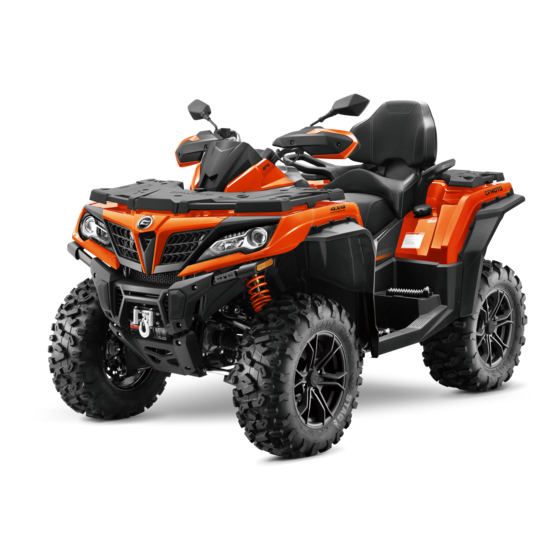
CF MOTO CFORCE 1000 Owner's Manual
Hide thumbs
Also See for CFORCE 1000:
- Owner's manual (184 pages) ,
- Installation instructions manual (53 pages)
Table of Contents












Need help?
Do you have a question about the CFORCE 1000 and is the answer not in the manual?
Questions and answers
Здравствуйте, для работы на СВО нам дали квадроцикл sharmax 1000,прошли обратную,но скорость больше ста не идит!как снять ограничение скорости!?